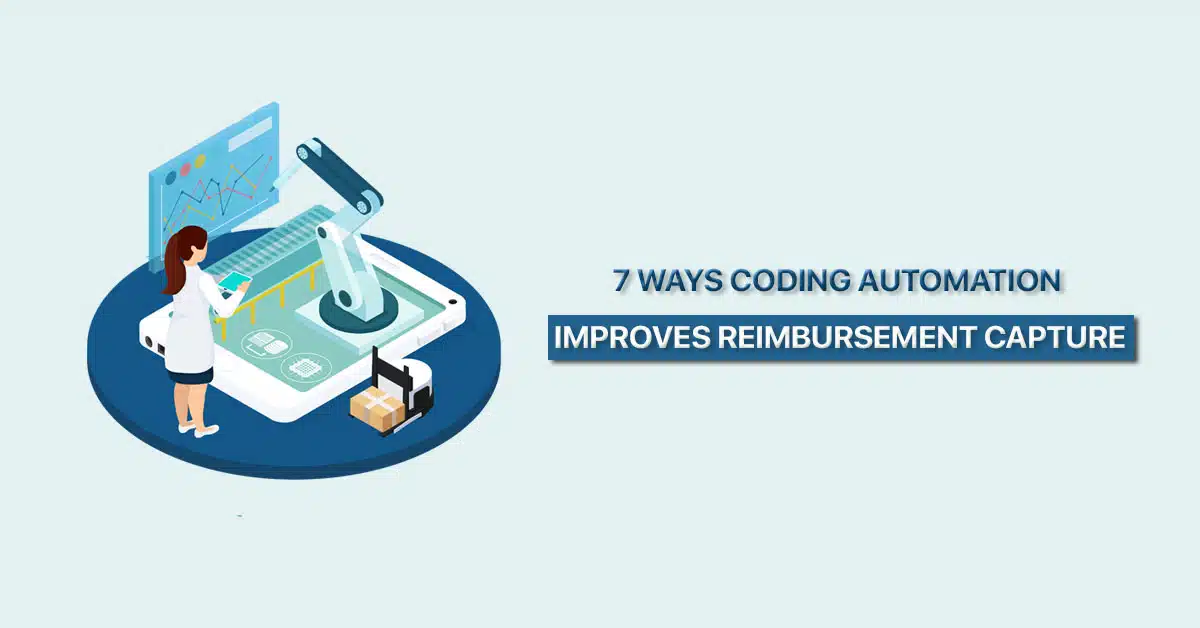Ensuring accurate reimbursement is essential for every physician’s practice. Regrettably, shortages in coding staff, backlogs in charting, and shifts in guidelines frequently result in denied claims and financial loss. While various remedies have been devised, only coding automation has the potential to genuinely address this issue. Below, we’ll explore seven ways in which this AI technology enhances revenue capture. However, before delving into these, it’s crucial to grasp the fundamental reason why coding poses a burden for many practices today.
The primary issue in the current medical coding process:
When considering the fundamental challenges in coding today, various concerns arise – expenses, time investment, the persistent shortage of coders, and the added administrative burden on your practice. However, the underlying issue revolves around perspective: practices often accept the current state of affairs without recognizing there are alternatives. Traditionally, administrators and physicians have embraced the notion that grappling with a hefty coding workload is an unavoidable task, despite its time-consuming, cumbersome, and often frustrating nature. The reality is, it can be streamlined, uncomplicated, and remarkably accurate.
The latest coding automation technology, rooted in advanced deep learning AI, has revolutionized the physician coding process. I understand that this assertion may seem incredulous. The most effective way to demonstrate the impact of AI coding is to draw a parallel to another groundbreaking technology that transformed our daily lives – the washing machine. While this analogy may initially seem unconventional, bear with me, and you’ll soon grasp the connection.
Before the advent of the washing machine, laundering clothes could extend from half a day to an entire day’s endeavor. Similar to the time-intensive nature of coding, people simply accepted this as the norm. However, with the introduction of the washing machine, a complete paradigm shift occurred. Suddenly, a task that consumed hours upon hours could be accomplished in 30-60 minutes. This fundamentally altered people’s lives, unlocking additional time, energy, and focus for more significant tasks.
Much like the washing machine, AI coding automation will save your practice countless hours of work every week, providing your physicians and staff with the freedom to engage in higher-value activities. This technology is poised to fundamentally revolutionize the way coding is conducted. Don’t be surprised if, one day, everyone in the healthcare industry looks back on this era and wonders, ‘How did we ever manage without AI coding?
Coding automation’s impact on revenue capture
You’ve been briefed on the central challenge in coding. Now, let’s delve into the specifics of how AI technology benefits your practice. Here are seven ways in which coding automation enhances reimbursement capture:
-
Identifies Errors:
It’s a fact that coders and physicians may occasionally make mistakes – it’s part of human nature. This is particularly prevalent when your staff is inundated with a backlog of work or a high volume of patients. How does coding automation assist? It promptly flags documentation deficiencies for correction. For instance, the AI technology can detect overlooked procedures, misinterpretations of tests, incorrect E/M code levels, and other inaccuracies.
-
Addresses Workforce Shortages:
The current shortage of coders is a persistent issue. This situation has led to increased costs and overtime, impacting your bottom line. From a reimbursement-capture standpoint, the shortage of workforce places strain on your coding staff, contributing to errors and chart backlogs. These issues hinder the pace at which reimbursement is captured and the revenue cycle is completed.
-
Enhances Accuracy:
Coding automation not only catches errors and alleviates stress on your coding team, but it also enhances overall accuracy. It thoroughly identifies the appropriate procedures and treatments and assigns the most fitting codes, often boosting your RVUs, when applicable. AI coding automation also scrutinizes clinical narratives to assign the most precise code – capturing subtleties in a patient’s condition that may be challenging for coding teams to pinpoint.
-
Facilitates Real-Time Feedback:
Hybrid coding models integrate both AI and human coders. In this model, AI offers coding teams immediate feedback on their work – suggesting improvements and rectifying inaccuracies. Furthermore, this feedback loop can be extended to physicians. Based on their documentation of patient encounters, AI can propose adding more detail and highlight incomplete or absent information, ultimately enhancing clinical documentation upstream.
-
Cross-References Medical Documentation:
Coding automation can cross-reference an assigned code with a patient’s EHR, consultation reports, and other available medical records – swiftly reviewing the patient’s complete history. This cross-referencing feature assesses whether the assigned code presents any contradictions or inconsistencies, ensuring accuracy and rightful reimbursement.
-
Adapts to Guideline Changes:
With new guideline revisions taking effect this year, your coding team may still be adjusting. AI guarantees that none of the common 2023 E/M errors and changes go unnoticed. For instance, according to the new guidelines, the effort a physician puts into considering multiple diagnoses, treatments, and procedures should be factored into the E/M code. As AI technology instantly incorporates guideline changes, it will capture this update to ensure proper reimbursement.
-
Offers Comprehensive Coding Support:
At this point, you can appreciate the thoroughness of coding automation. Alongside its precision, error-catching capability, and swift adaptation to guideline changes, the AI system compensates for common, albeit momentary, lapses in concentration by physicians during their documentation of specific encounters – such as a problem visit and an annual checkup on the same day. While a physician might overlook accounting for both encounters, AI will identify and ensure proper reimbursement.
Enhanced patient care is an additional advantage of coding automation
Beyond just reimbursement capture, coding automation offers another valuable advantage to a practice: an enhancement in patient care. In a manner akin to how the washing machine revolutionized time management for countless Americans in the mid-1900s, AI accomplishes a similar feat for today’s physicians. It empowers them to channel more of their energy and attention towards their patients. With a lighter administrative load comes reduced stress, thereby lowering the risk of physician burnout. Why is this critical? Patients under the care of burnt-out physicians are more likely to undergo unnecessary tests, experience errors, and express lower overall satisfaction with a medical facility.
In line with this, coding automation elevates the overall patient experience. By expediting the post-visit process, patients receive their bills in a more timely manner. While this may not initially seem like a major benefit, from the patient’s viewpoint, swifter billing allows for more accurate financial planning for healthcare expenses, reducing the likelihood of overlooking a bill. Without coding automation and its resultant slower billing cycle, patients may be taken aback by a legitimate bill they anticipated receiving weeks or even months earlier, leading to frustration and dissatisfaction with your practice.
To summarize, the advantages of AI coding automation are clear-cut: physicians can allocate more time to their patients, resulting in an enhancement of the quality of care provided, and an overall improvement in the patient experience
The weight of your coding responsibilities can soon be a thing of the past
You’ve likely felt the burden of coding on your practice for quite some time. Hopefully, you’re now beginning to realize that change is indeed attainable. AI coding automation has the potential to significantly alleviate the workload of your entire practice, while simultaneously enhancing revenue capture. It’s just a matter of time before this technology revolutionizes the entire healthcare industry.



